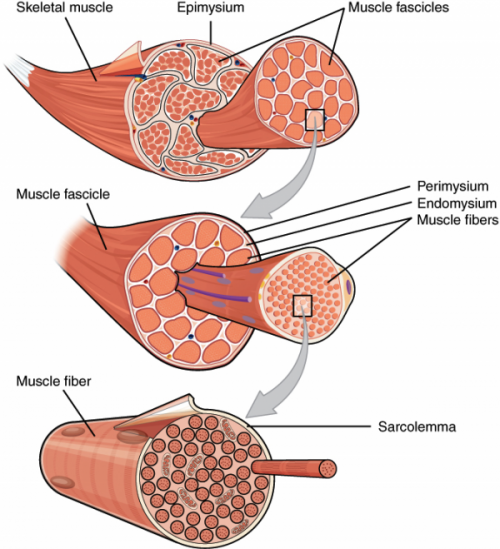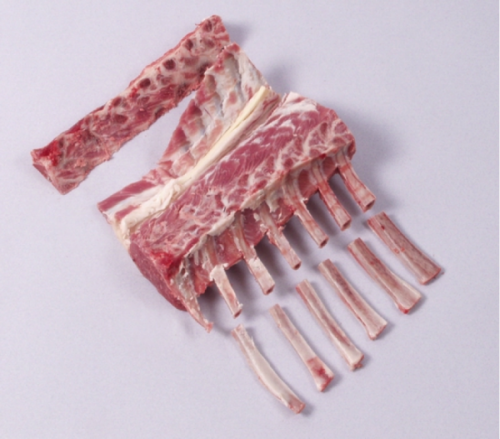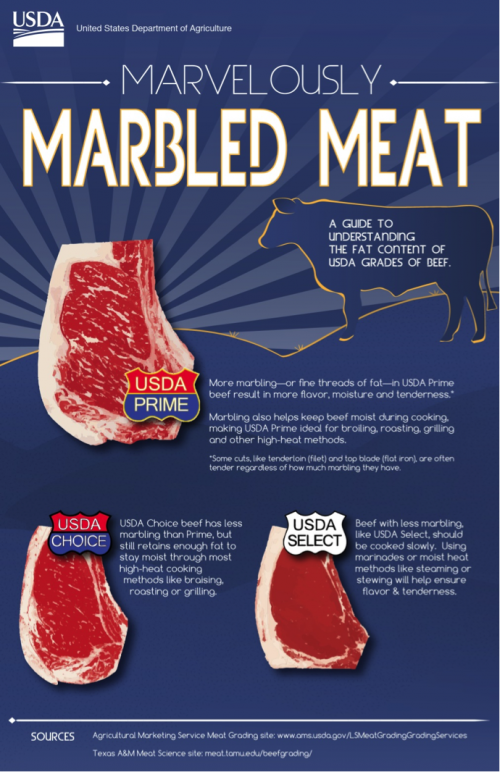2 Composition of Meat
Meat muscle, which is what we eat, is made of fibres, bound together with connective tissue, that are mainly linked to other groups of muscles or directly to the animal’s bone structure. Muscle contains 60% to 70% moisture, 10% to 20% protein, 2% to 22% fat, and 1% ash, depending on type and species.
On larger bones (such as the shanks of larger animals), it is easy to see the muscle groups in bundles (if cut on the cross-section) surrounded by collagen fibres and a much heavier connective tissue (elastin) that forms a thin covering (called silverskin) separating muscle groups or a tendon at the ends of the muscle group (Figure 1). The tendon is attached to the bone at or near a bone joint (Figure 2).


The muscle fibres are known as myofibrils, which are composed of thick and thin filaments arranged in a repeating pattern alongside the other myofibrils (Figure 3). One unit of a bundle is called a sarcomere, or little muscle. The thick filaments are the contractile protein myosin. The thin filaments, known as actin, contain two other proteins called troponin and tropomyosin that help regulate muscle contraction.

The amount of connective tissue in meats and its solubility (the degree to which it is dissolved during the cooking process) can directly influence the tenderness of meat muscle. For example, as an animal ages, it has more connective tissue and therefore experiences cross-linking, an increase in connective tissue that becomes highly insoluble. This is why older animals are usually tougher and younger animals are more tender.
The most tender cuts from a beef animal, such as tenderloin, strip loin, and top sirloin from the beef hind quarter, can be prepared using a dry heat cooking method. In contrast, tougher cuts from the front quarter of beef that have more collagen connective tissue, such as the blade, shoulder, and shank, require a moist heat or combination cooking method, which breaks down collagen into a gelatin form when cooked in water at temperatures of over 80°C (176°F). The collagen dissolves in the water, which is why stocks made from animal bones and connective tissue have body and thicken when cooled. (We discuss cooking potential and tenderness in more detail later in the book.)
Heavy collagen, such as tendons at the ends of muscle groups and the protein elastin, does not break down under this cooking process and is therefore insoluble in water. In addition to silverskin and tendons, there is a specific piece of heavy collagen (also known as the backstrap) that is yellow in colour and located along the upper backbone from the base of the skull to the end of the rib cage in all meat animals (Figure 4).

Fats are deposited all over certain parts of the animal and contribute to the shelf life, flavour, and colour of dry aged meats. Fat in beef meat muscle is called intramuscular fat and appears as a pattern of wavy lines, commonly known as marbling (Figure 5).

Well-marbled meat usually indicates that the cooked meat will be juicy and tender, and the amount of marbling is a factor that is used to determine the grade of beef, specifically for the A grades. Beef grading is discussed in detail later in the book.

